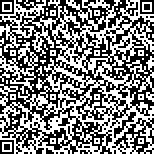下载中心
优秀审稿专家
优秀论文
相关链接
摘要

测量铁化合物溶解物的吸收光谱曲线是水中铁离子含量遥感反演的关键。采用自主设计的水体透射光测量装置,利用ASD光谱仪测量相同厚度不同浓度铁离子溶液的透射光辐亮度,然后运用比值法计算出水中3种铁化合物(硫酸铁、氯化铁和铁氰化钾)的消光系数和吸收系数,最终得到400-900 nm波长范围内3种铁离子吸收系数光谱。该方法可以较好地消除实验装置和水中悬浮物的影响。结果表明,水中3种铁离子均在紫蓝光波段吸收作用较大,绿光次之,逐渐减少至红光波段后,吸收系数变化很小呈平缓直线。测量结果可作为水体铁离子浓度遥感反演模型所需的基础参数。
The key to extract the contents of ferric ion in water through the remote sensing technique is to measure the absorption spectrums of the dissolved ferric compounds. This paper selects three types of ferric compounds (i.e., ferric chloride, ferric sulfate, and potassium ferricyanide), which are most common in nature, to measure their absorption spectrums. The equipment is designed to adjust the path length of passing light and increase the accuracy of the results at visible and near-infrared wavelength range. An Analytical Spectral Devices (ASD) spectrometer measures the radiance of direct light passing through ferric ion solutions of different concentrations on a standard board. The ratio method is used to eliminate environmental errors and the effect of the suspended solids in water. The extinction coefficient and the absorption coefficient per mg/L of three types of ferric ion solutions are calculated. Finally, the absorption coefficient per mg/L of the three types of ferric ion from 400 nm to 900 nm is obtained. Results indicate that all three types of absorption coefficient in blue are larger than green and red and slightly change from red to near-infrared. Moreover, the value of the absorption coefficient of three types of ferric ion from large to small (i.e., potassium ferricyanide, ferric sulfate, and ferric chloride) ranges from 400 nm to 455 nm. Furthermore, the absorption coefficient of ferric sulfate is larger than potassium ferricyanide and ferric chloride and ranges from 460 nm to 900 nm. The characteristic of absorption spectrum of the types of ferric ion exhibits a slight difference because of the different outermost electronic structure. The wavelength, which has the maximum of average relative error, is used in the absorption coefficient (i.e., ferric chloride at 417 nm, potassium ferricyanide at 469 nm, and ferric sulfate at 624 nm) to calculate the concentration of its ferric ion solutions and compare them with the real concentrations. The relative errors are less than 5%, which verifies that results are accurate. The measured absorption spectrum is reasonable and accurate. Results can be used as the base parameter in the remote sensing inversion model of ferric ion in water. The largest absorption coefficient appears in blue, which suggests blue is the most sensitive wavelength to detect the change of ferric ion concentration in water.

